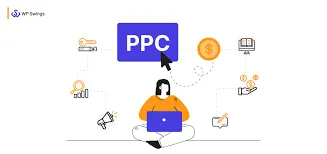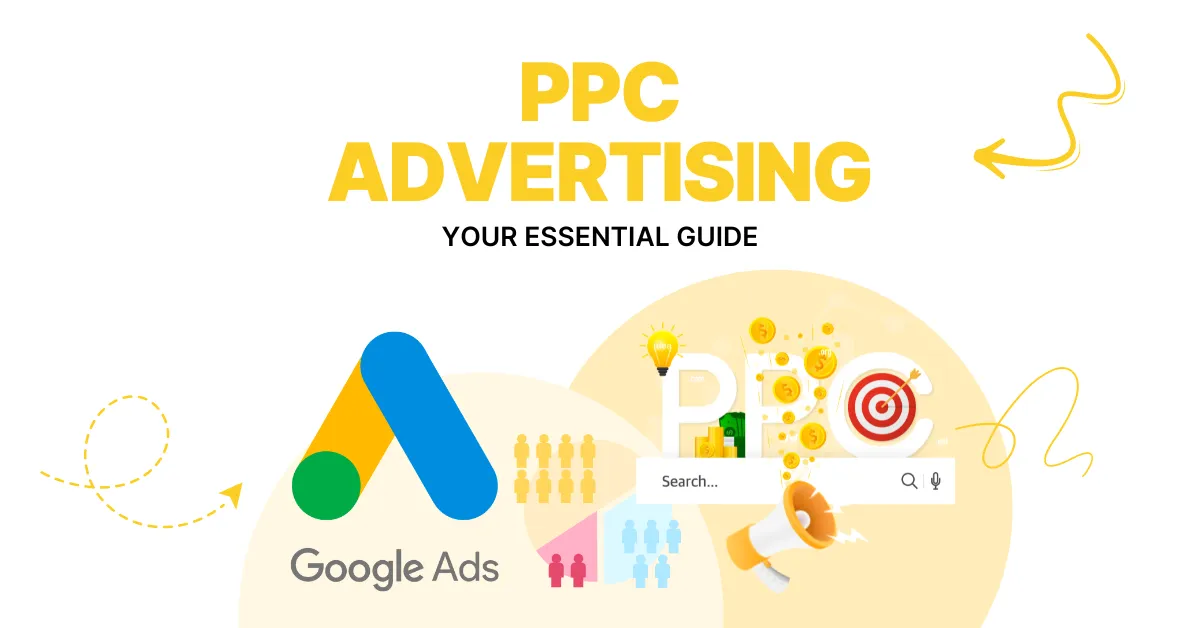The Ultimate Guide to Website PPC Advertising for Maximum ROI

In the competitive digital landscape, businesses need fast, measurable, and scalable ways to reach their target audience. Website PPC advertising (Pay-Per-Click) is one of the most powerful tools in a digital marketer’s toolkit, delivering immediate traffic, precise targeting, and clear ROI metrics. But with great potential comes the need for a solid strategy.
This ultimate guide to website PPC advertising will walk you through everything you need to know—from understanding how PPC works to optimizing your campaigns for maximum return on investment (ROI).
What Is Website PPC Advertising?
PPC advertising is a digital marketing model where advertisers pay a fee each time someone clicks on their ad. These ads are displayed on search engines (like Google and Bing) or social media platforms (like Facebook, Instagram, and LinkedIn) and are designed to drive traffic to a specific landing page.
Common PPC ad formats include:
- Search Ads (text-based ads on search results)
- Display Ads (banner ads on websites)
- Shopping Ads (product ads for eCommerce)
- Video Ads (mainly on YouTube)
- Social Media Ads (targeted posts on platforms)
Why PPC Advertising Delivers High ROI
PPC is popular among businesses of all sizes because it offers predictable, data-driven results. Here’s why PPC works:
🎯 Highly Targeted Traffic
You can narrow down your audience by keywords, location, interests, age, job titles, and even device type. This precision ensures you’re paying only for traffic that matters.
🚀 Immediate Results
Unlike SEO, which can take months, PPC delivers instant visibility and traffic once your campaign is live.
📊 Easy Performance Tracking
Every metric—clicks, impressions, cost per click (CPC), conversion rate, and ROI—can be measured and optimized in real-time.
💰 Budget Control
Set a daily or monthly budget and pause or adjust campaigns at any time. You’ll never spend more than you allow.
Choosing the Right PPC Platform
Not all platforms are equal. Choosing the right one depends on your audience, goals, and budget.
1. Google Ads
Best for: Search intent and high-conversion leads
With access to Google Search, Display Network, YouTube, and Gmail ads, Google Ads offers massive reach and precision.
2. Bing Ads (Microsoft Advertising)
Best for: Lower competition and older demographic
Often overlooked, Bing Ads can generate quality leads at a lower CPC compared to Google.
3. Facebook & Instagram Ads
Best for: Brand awareness and B2C targeting
Great for visual ads, remarketing, and building audience segments based on user behavior and interests.
4. LinkedIn Ads
Best for: B2B campaigns targeting professionals
Highly effective for targeting decision-makers by industry, job title, and company size.
Step-by-Step: Creating a PPC Campaign for Maximum ROI
Here’s how to create a PPC campaign that generates results—not just clicks.
✅ 1. Define Campaign Objectives
Clear goals help guide your strategy. Examples include:
- Driving traffic to a landing page
- Getting quote requests
- Growing email subscribers
- Boosting eCommerce sales
✅ 2. Conduct Thorough Keyword Research
Use tools like:
- Google Keyword Planner
- SEMrush
- Ubersuggest
- Ahrefs
Focus on long-tail, high-intent keywords to attract ready-to-convert visitors.
✅ 3. Craft Compelling Ad Copy
Good ad copy grabs attention and drives action. Make sure it includes:
- The target keyword
- A unique value proposition
- A strong CTA like “Get a Free Quote” or “Buy Now”
✅ 4. Design a High-Converting Landing Page
Your landing page must match the intent of the ad and be:
- Mobile-friendly
- Fast-loading
- Focused on one action (form submission, purchase, etc.)
- Clear and benefit-oriented
✅ 5. Set Smart Bidding Strategies
Choose from bidding options like:
- Manual CPC (full control over bid)
- Maximize Conversions (automatic)
- Target CPA or Target ROAS
Start small, analyze performance, and adjust accordingly.
✅ 6. Implement Tracking and Analytics
Use:
- Google Analytics
- Conversion tracking (Google Ads or Facebook Pixel)
- Call tracking tools (if using phone conversions)
Tracking ensures you know which ads are working and which aren’t.
Optimizing Your PPC Campaign for Higher ROI
Once your campaign is running, use these tips to continuously improve ROI:
🔁 A/B Test Everything
Test headlines, CTAs, visuals, ad formats, and landing pages to see what resonates most with your audience.
🧠 Use Negative Keywords
Exclude irrelevant traffic by adding negative keywords like “free” or “jobs” if you sell premium services or products.
🎯 Retarget Website Visitors
Use display and social retargeting ads to bring back visitors who didn’t convert the first time.
📱 Optimize for Mobile
Make sure your landing pages and forms work perfectly on mobile—more than 60% of PPC traffic comes from mobile devices.
📆 Schedule Ads Smartly
If your audience is most active during business hours, schedule ads accordingly. Avoid wasting time during off-peak hours.
Common PPC Mistakes That Kill ROI
Avoid these costly errors:
- ❌ Linking ads to your homepage instead of a focused landing page
- ❌ Using broad match keywords without filters
- ❌ Ignoring ad quality score (affects your CPC and position)
- ❌ Not analyzing metrics regularly
- ❌ Neglecting split tests and optimizations
Real-World Results: What Does PPC ROI Look Like?
The average ROI for Google Ads is 200%—you earn $2 for every $1 spent. However, many businesses see even higher returns when campaigns are properly optimized. For example:
- A SaaS company achieved a 7x ROI by targeting high-intent search terms and optimizing their onboarding funnel.
- An eCommerce brand saw a 45% increase in conversions after implementing retargeting campaigns and optimizing mobile checkout pages.
PPC ROI Metrics to Track
To ensure your campaign delivers real business value, keep an eye on:
- Click-Through Rate (CTR)
- Conversion Rate
- Cost Per Conversion (CPA)
- Return on Ad Spend (ROAS)
- Bounce Rate from PPC traffic
- Lifetime Customer Value (LTV)
Use these KPIs to fine-tune your strategy over time.
Final Thoughts
When done right, website PPC advertising is a reliable, scalable, and cost-effective way to generate qualified traffic, increase conversions, and boost your bottom line. The key to success lies in understanding your audience, choosing the right platform, optimizing your campaigns, and consistently testing and refining your approach.
Whether you’re a startup with a small budget or a seasoned business aiming for aggressive growth, PPC can deliver maximum ROI—if you have the right strategy in place.





